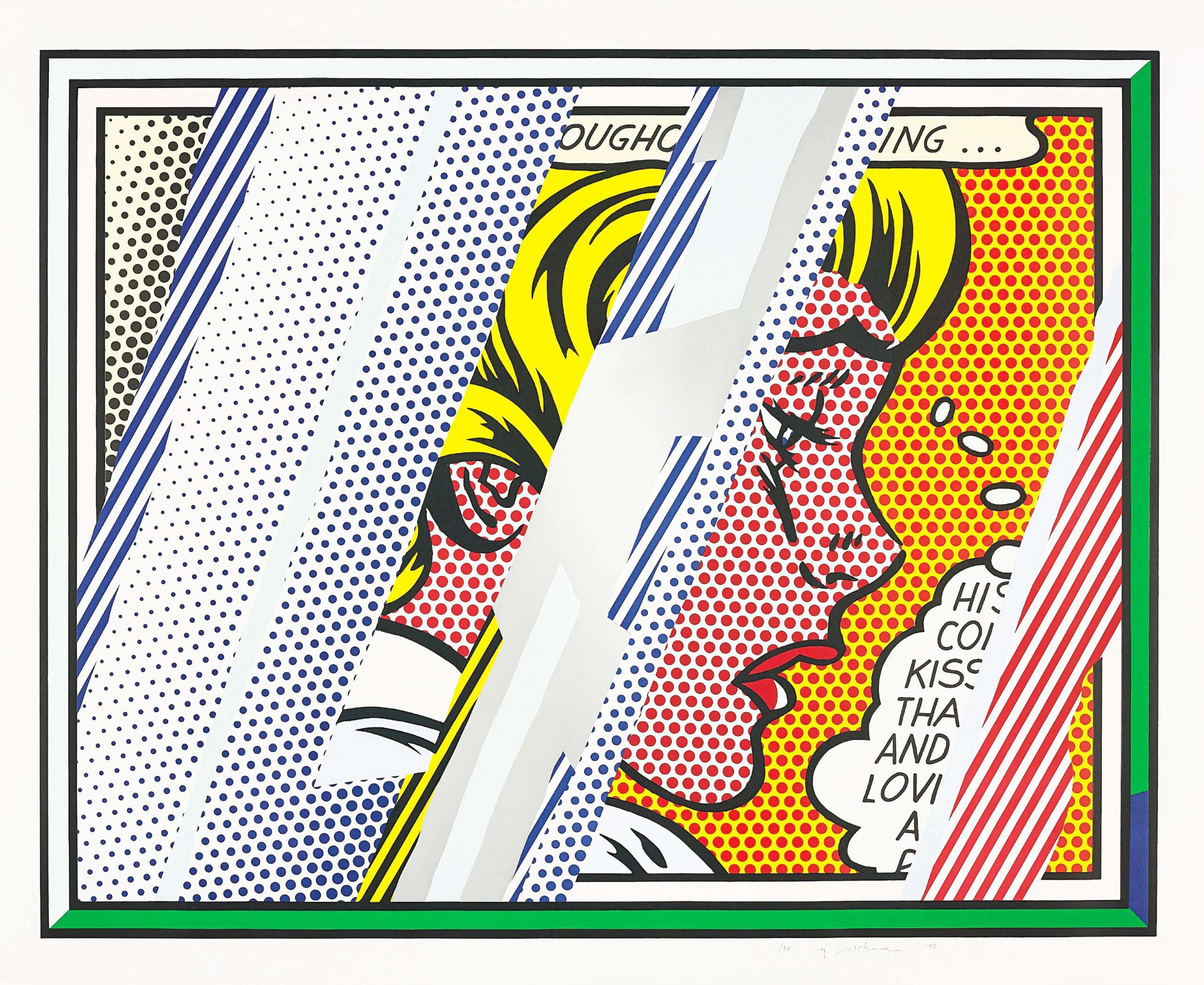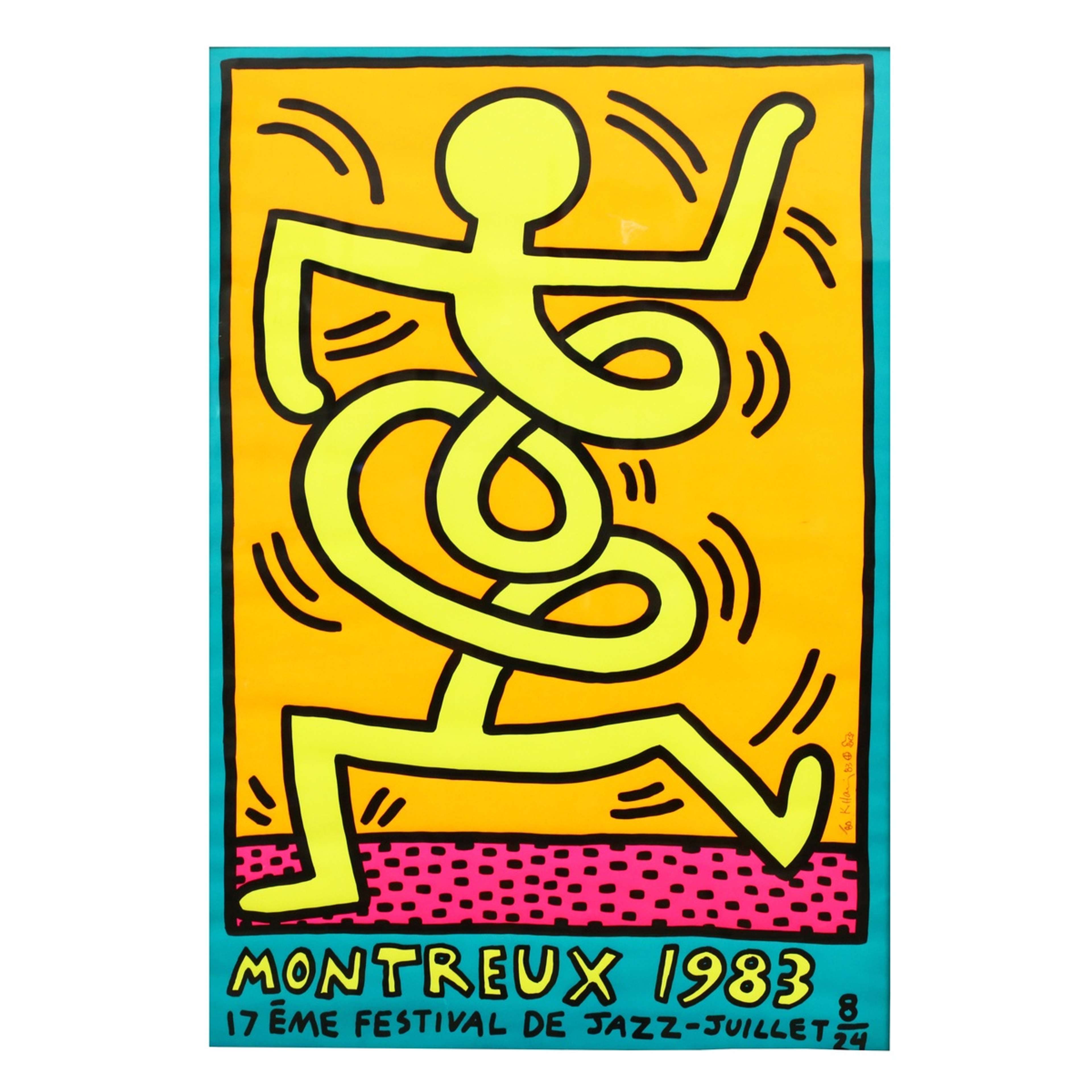 Composition II © Roy Lichtenstein 1996
Composition II © Roy Lichtenstein 1996
Interested in buying or selling
Roy Lichtenstein?

Roy Lichtenstein
290 works
Roy Lichtenstein's Composition series reveals the artist's love of music and close affinity to jazz. Despite his immense success as a Pop Artist, Lichtenstein always longed to be a musician himself, making this series an homage to his greatest passions.
The series appropriates sheet music.
 Composition I © Roy Lichtenstein 1996
Composition I © Roy Lichtenstein 1996In his typically vibrant style, Lichtenstein transformed mundane sheets of music into dizzying and dancing compositions. The once linear staves of music are represented like twisting roads, layered over one another to give a sense of movement and liveliness.
Lichtenstein animated the music he represented.
 Composition IV © Roy Lichtenstein 1995
Composition IV © Roy Lichtenstein 1995With his application of punchy primary colours, Lichtenstein gives his sheet music an energetic appeal. Some of his music notes are represented outside the stave, as though dancing.
Lichtenstein was raised by a musical family.
 The Melody Haunts My Reverie © Roy Lichtenstein 1965
The Melody Haunts My Reverie © Roy Lichtenstein 1965Lichtenstein was born into a musically talented family, which clearly inspired his passion for music throughout his life and artistic career. His mother, Beatrice Lichtenstein, was a talented piano player and likely informed Lichtenstein's own passion for music.
Sound is an integral part of Lichtenstein's oeuvre.
 Sweet Dreams Baby! © Roy Lichtenstein 1965
Sweet Dreams Baby! © Roy Lichtenstein 1965Since his early comic strip-inspired works, Lichtenstein has used onomatopoeia to enliven his works. While his sound-inspired works usually featured a suggestive word in bold, his Composition works demand the viewer's interpretation of his musical notes.
Lichtenstein was a lover of jazz music.
 Aspen Winter Jazz Poster © Roy Lichtenstein 1967
Aspen Winter Jazz Poster © Roy Lichtenstein 1967Born and raised in New York City, Lichtenstein grew up amidst the city's infamous Jazz Age. Lichtenstein himself played a variety of instruments, and frequented concerts at the Apollo Theatre in his teenage years.
Lichtenstein used music in his art to question distinctions between 'high' and 'low' arts.
 Industry And The Arts I © Roy Lichtenstein 1969
Industry And The Arts I © Roy Lichtenstein 1969As a Pop Artist, Lichtenstein's approach to art making was often mechanical and industrial. The subject matter of his works, however, reveals his ongoing fascination with the arts and human creativity.
Lichtenstein wanted to be a musician.
 Cubist Cello © Roy Lichtenstein 1997
Cubist Cello © Roy Lichtenstein 1997Lichtenstein was an artist with many passions, all of which informed his art practice. In a 1997 interview he said, "What I really want to do is music, but I won't give up my day job!" The Composition series is a testament to his deep-rooted passion for music, and a marriage of his two favourite expressions of creativity.
The Composition series speaks to the creative and free spirit of jazz.
 Composition II © Roy Lichtenstein 1996
Composition II © Roy Lichtenstein 1996With the twists and turns of his staves, Lichtenstein's Composition works seem to mimic the syncopation and improvisation that characterises jazz music. Though the works might not represent a recognisable melody, they capture the lively genre that Lichtenstein favoured.
The title of the series is a pun.
 Reflections On Girl © Roy Lichtenstein 1990
Reflections On Girl © Roy Lichtenstein 1990Typical of the witty humour that underscores his entire oeuvre, Lichtenstein humorously titled this series to reflect his subject matter. Indeed, each visual composition in the series represents a different musical composition, toying with the terminology used across the arts.
Music is elemental in Pop Art.
 Montreux Festival De Jazz © Keith Haring 1983
Montreux Festival De Jazz © Keith Haring 1983Pop Artists of the 1970s-80s, especially those living and working in NYC, were immersed in the vibrant cultural scene that they depicted in their work. For Lichtenstein's successors, the night life and music scene of the city informed their mass media-influenced artwork. From Warhol, to Basquiat, to Haring, music was a fundamental force in Pop.
